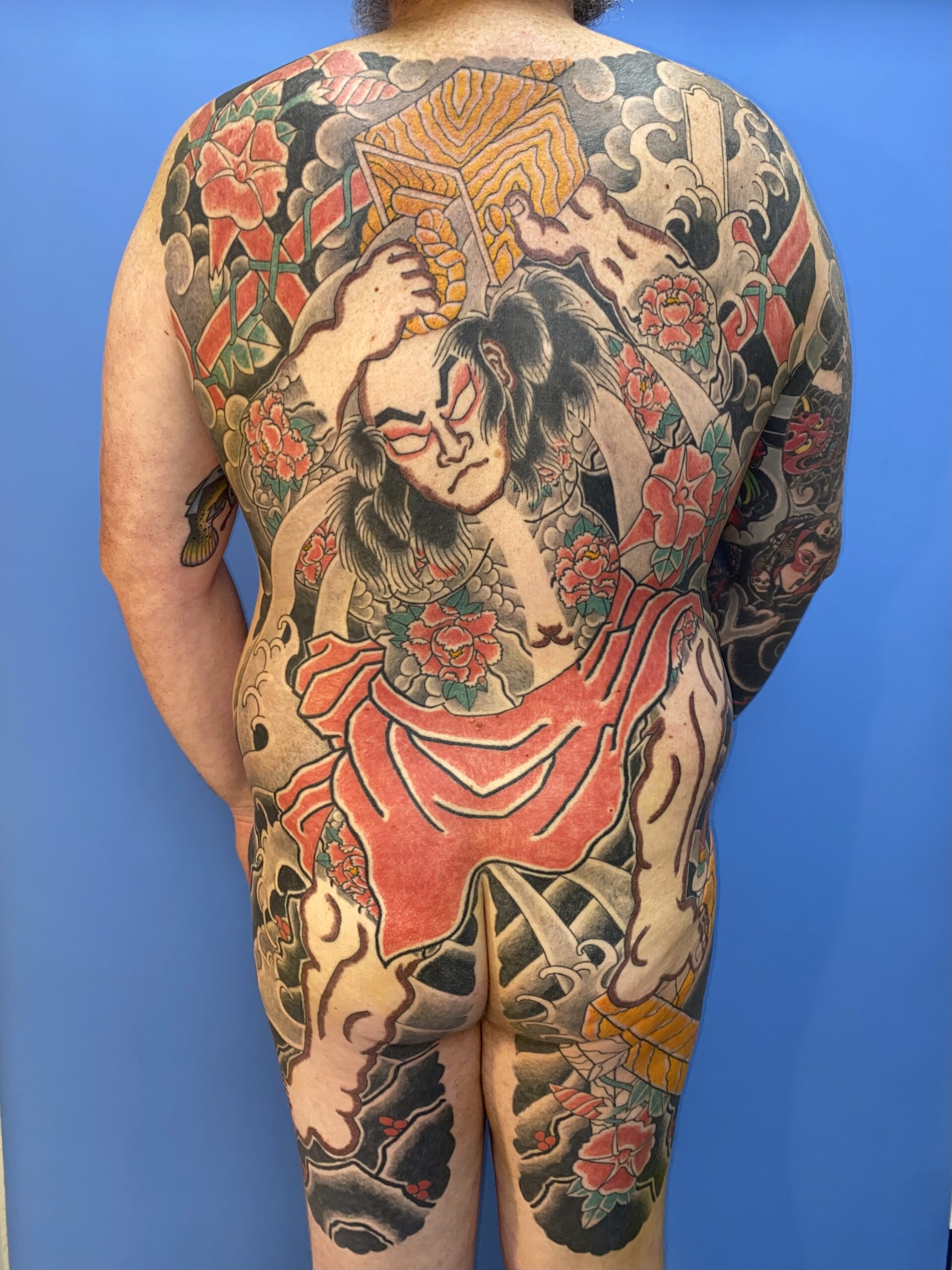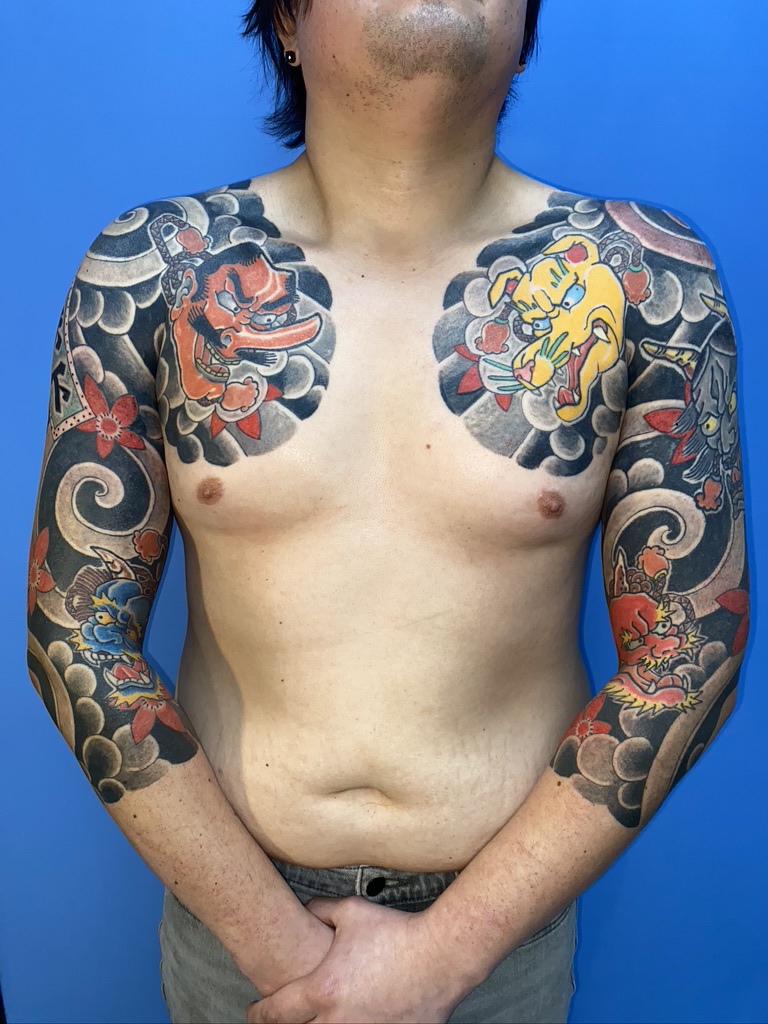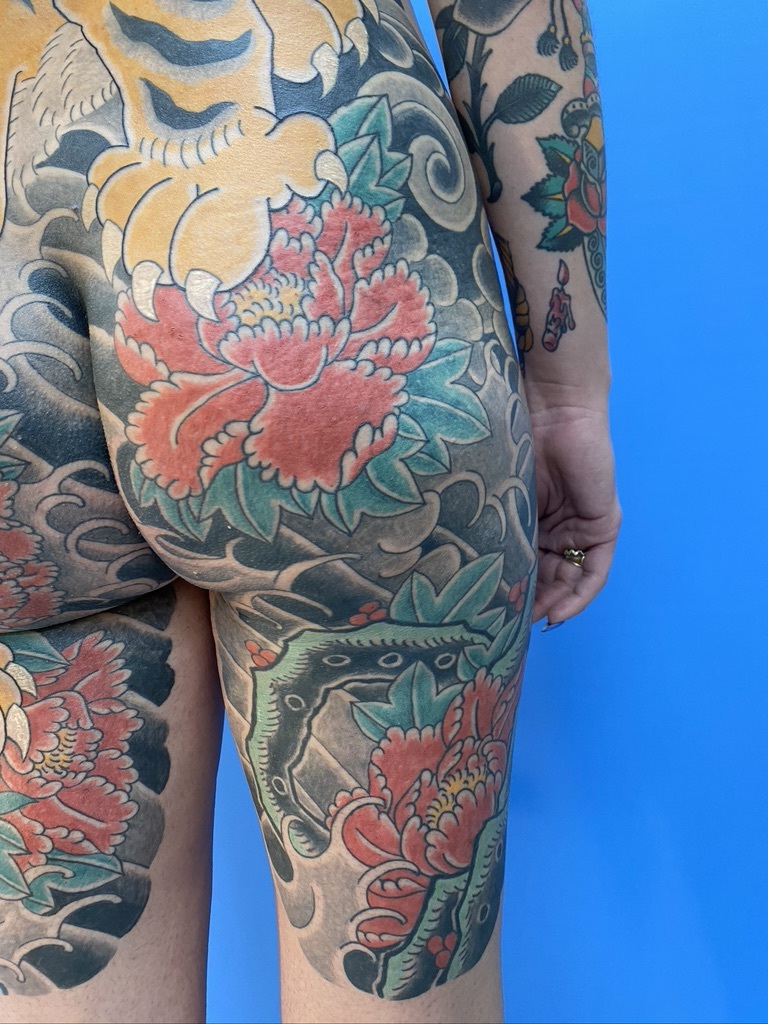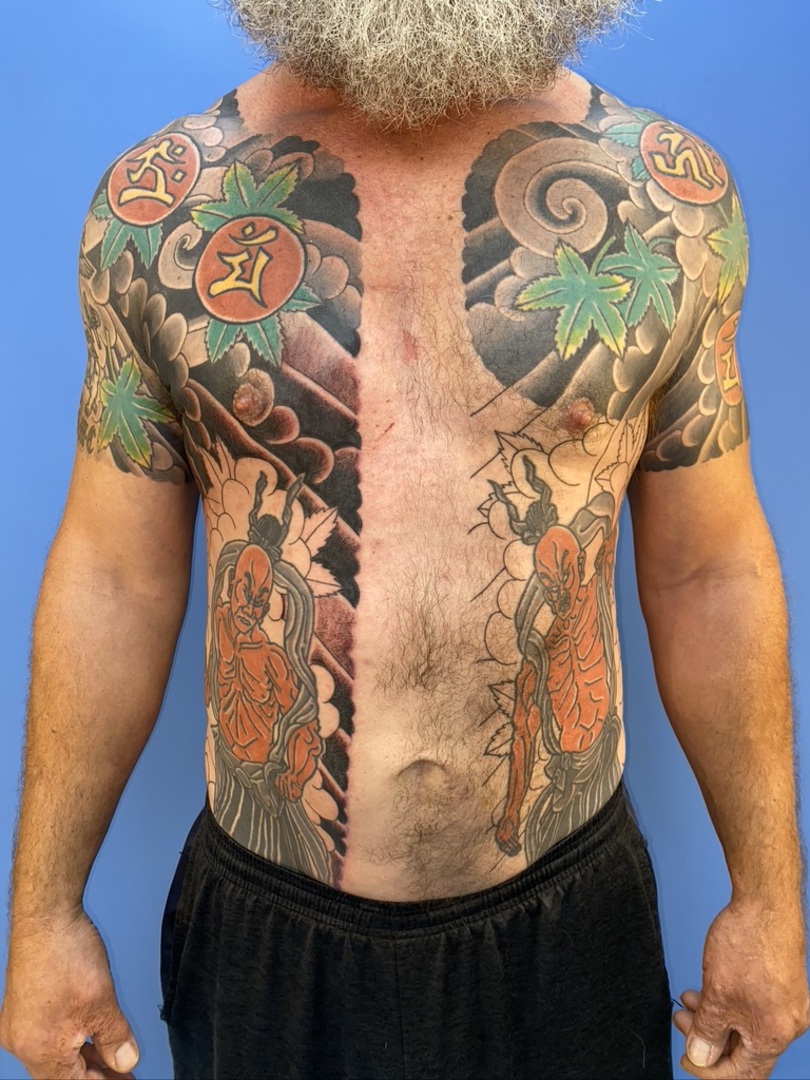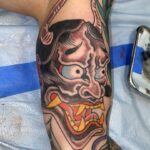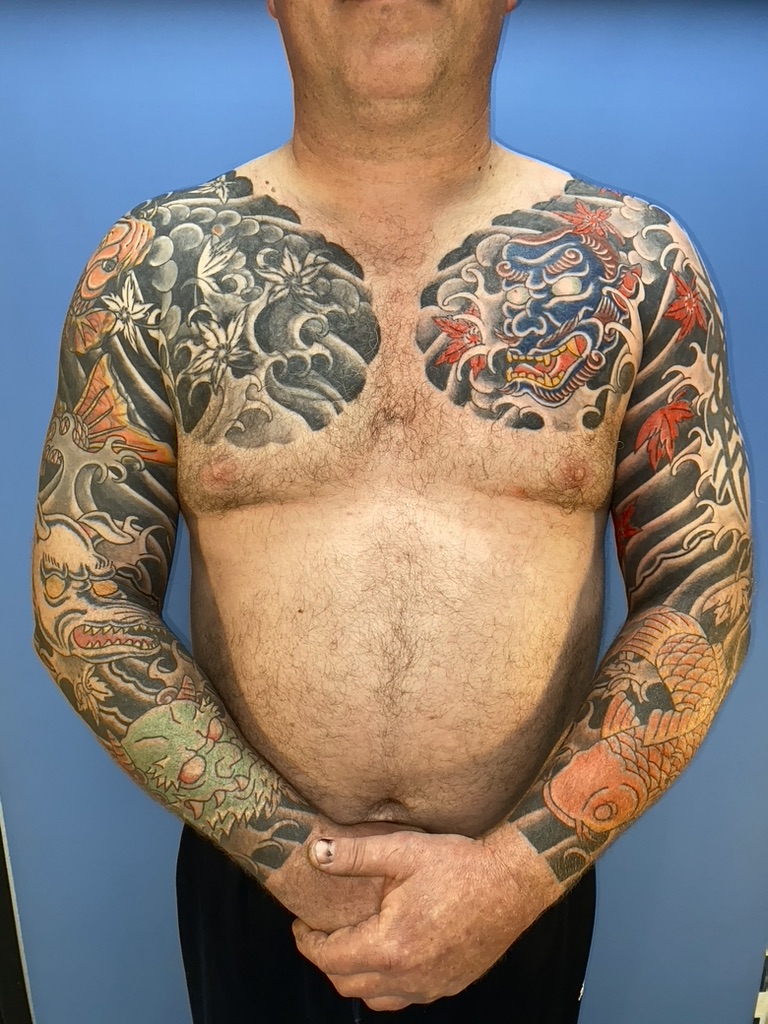The japanese traditional tattoo first made its appearance in the 1800’s, several decades before its American counterpart. It is tattooing’s oldest pictorial tradition, arguably its most successful, and it offers, above all, heavy coverage in tattoos, creating full bodysuit tattoos, backpiece tattoos, and sleeve tattoos.
For these reasons, it was imported by American tattoo masters such as Sailor Jerry Collins and Don Ed Hardy, who in doing so, created a new frontier of American traditional tattooing – the japanese style tattoo.
The japanese tattoo is highly concerned with the overall aesthetic of the work. The body is seen as one cohesive whole- and the tattoo follows suit.
Power itself is the ultimate meaning of the traditional Japanese tattoo. The power of the Creator, of nature, of man and beast, is on full display. There is also beauty to be found in this power, but the tattoo is more concerned with building up the power of its wearer with imagery of strength and dedication. These two one must have in spades to withstand the affair, at any rate.
Looking closer, there are subtleties that can be gleaned. One finds layers of meaning in these brocaded tattoos. Stories unfold, relationships proliferate, and legends are passed on. The hero’s journey is undertaken, is accomplished in visual form, as well as through the suffering and transformation of the wearer of the work as the tattoos comes alive session by session…


